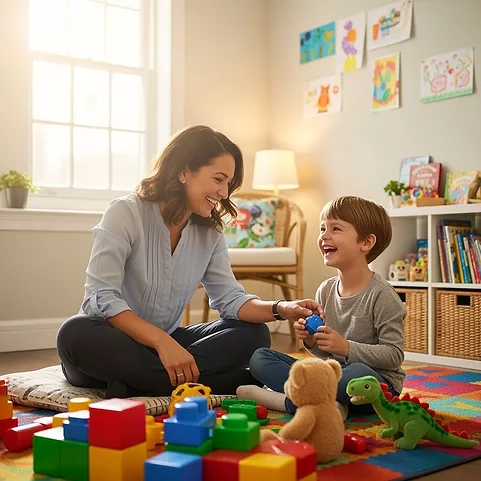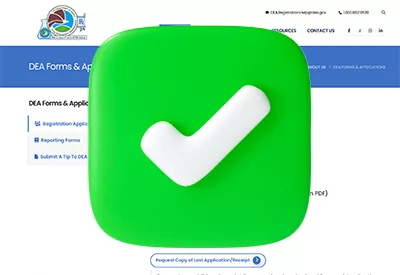ADHD Update 2025: New Treatments and Current Approaches for Co-Occurring Conditions

Anne Buchanan, DO. Child and adolescent psychiatrist; Medical Director, Caring Transitions Program, NYC Health + Hospitals, New York, NY.
Dr. Buchanan has no financial relationships with companies related to this material.
Michael, 10, struggles with inattention and impulsivity. Teachers describe him as bright but distractible. He loses assignments and interrupts class discussions. In the face of declining grades and increasing frustration, Michael’s parents ask about medication options, even though they are worried about side effects.
Where is ADHD care today? In this era of increased concerns about psychotropic medications for children and teens, we need to be clear on the basics of ADHD care, know where new treatments fit in, and address common co-occurring conditions.
ADHD affects about 8% of children globally, with psychostimulants remaining the gold standard treatment (Ayano G et al, J Affect Disord 2023;339:860–866). However, the landscape has expanded significantly with novel formulations, nonstimulant medications, and digital therapeutics offering more options for personalizing care.
Newer ADHD treatments
Novel stimulant formulations
Several innovative medications address the clinical challenges we see in patients daily, albeit with the usual side effects.
Serdexmethylphenidate/dexmethylphenidate (Azstarys)
- How it’s different: Combines immediate-release dexmethylphenidate with a prodrug component for smoother, extended release and potentially lower abuse potential.
- Evidence quality: Laboratory classroom studies demonstrate statistically significant symptom reduction versus placebo (Kollins SH et al, J Child Adolesc Psychopharmacol 2021;31(9):597–609).
- Clinical use: Consider for children experiencing afternoon crashes with standard formulations, or for families that are concerned about diversion risk.
Dextroamphetamine patch (Xelstrym)
- How it’s different: Only transdermal amphetamine patch; nine-hour wear time with steady medication delivery through skin.
- Evidence quality: Standard FDA approval trials demonstrate efficacy comparable to oral amphetamines.
- Clinical use: Ideal for children who can’t swallow pills, have feeding tubes, or need dosing flexibility; apply two hours before effects needed. In clinical trials, 94% of patients had skin irritation, so the application site should be changed daily (www.tinyurl.com/mpuebfy3). Some kids might also try to remove the patch.
Delayed-release methylphenidate (Jornay PM)
- How it’s different: Evening dosing (6:30–9:30 PM) provides morning symptom control when child wakes up.
- Evidence quality: RCTs show marked decrease in caregiver strain and all-day symptom control (Childress AC et al, J Child Adolesc Psychopharmacol 2020;30(1):2–14).
- Clinical use: Transform treatment for families struggling with chaotic morning routines due to unmedicated ADHD symptoms.
Extended-release methylphenidate (Relexxii)
- How it’s different: A long-acting option with similar osmotic release delivery as Concerta but a wider range of dosages, including some not available as Concerta: 45, 63, and 72 mg.
- Evidence quality: Standard bioequivalence studies demonstrate expected efficacy profile.
- Clinical use: Additional choice when other methylphenidate formulations aren’t suitable or available.
Nonstimulant innovations
Viloxazine ER (Qelbree)
- How it’s different: Norepinephrine reuptake inhibitor with serotonin receptor modulation; addresses emotional dysregulation alongside core ADHD symptoms.
- Evidence quality: Recent meta-analysis confirms statistically significant ADHD symptom reduction versus placebo (Yu CL et al, JAMA Netw Open 2024;7(11):e2445885).
- Clinical use: Like atomoxetine (Straterra), for children with mood symptoms on stimulants or anxiety comorbidities. Weight-based dosing, with onset of four to six weeks.
Clonidine (Onyda XR)
- How it’s different: First liquid nonstimulant ADHD medication; bedtime dosing with extended-release properties. It’s a high-cost but flexible once-daily alternative to generic twice-daily clonidine ER (Kapvay).
- Evidence quality: Efficacy established for alpha-2 agonist class, though specific Onyda XR data are limited.
- Clinical use: Particularly valuable for children with ADHD plus tics, aggression, or sleep difficulties.
Digital therapeutics
EndeavorRx
- How it’s different: FDA-approved prescription video game designed to improve attention and thinking skills through interactive cognitive training.
- Evidence quality: Modest effect sizes in clinical trials (Oh S et al, Eur Child Adolesc Psychiatry 2024;33(2):481–493).
- Clinical use: Best as a complementary treatment for families seeking nonpharmacologic options; covered by some insurance plans.
ADHD + co-occurring conditions
ADHD frequently travels with other psychiatric conditions, complicating our treatment decisions. The key is understanding symptom chronology—distinguishing primary disorders from secondary ones and identifying which symptoms cause the greatest functional impairment. Don’t hesitate to consult colleagues when presentations become complex.
Remember that stimulant medications remain our cornerstone treatment even with comorbidities, but optimal care combines pharmacologic treatment with psychosocial interventions.
ADHD + anxiety
This combination requires careful assessment of symptom relationships, as apparent anxiety may represent untreated ADHD symptoms.
Treatment approach:
- First-line: Stimulant medications treat ADHD symptoms, do not exacerbate anxiety in most children, and may relieve anxiety secondary to ADHD (León-Barriera R et al, Clin Pediatr (Phila) 2023;62(1):39–46).
- Alternative: When stimulants aren’t suitable, atomoxetine provides effective ADHD treatment while potentially reducing anxiety symptoms.
- Emerging option: Viloxazine’s mechanism suggests potential anxiety benefits, though current research doesn’t specifically support this indication yet.
Important considerations:
- Alpha-2 agonists, while lacking FDA approval for anxiety treatment, are considered safe for children with both conditions.
- Avoid pairing selective serotonin reuptake inhibitors (SSRIs) with viloxazine due to serotonin syndrome risk.
- Monitor carefully when combining SSRIs with atomoxetine, as drug interactions can increase atomoxetine levels.
ADHD + depression
- Depression comorbidity requires determining whether mood symptoms preceded ADHD or developed as a consequence of academic and social struggles.
Treatment approach:
- First-line: Stimulants effectively reduce ADHD symptoms and may also alleviate depressive symptoms.
- Adjunctive: SSRIs are often added to target persistent depressive symptoms. Watch for behavioral activation that looks like hyperactivity, manic symptoms, and serotonergic syndrome.
- Alternative: Bupropion might address both conditions simultaneously, though it lacks FDA approval for either diagnosis in children. Consider it off-label in older teens when other approaches haven’t succeeded.
Important considerations:
- Alpha agonists have less of a clear impact on depression and might cause irritability.
- Viloxazine may help comorbid depression, but research remains limited.
- Atomoxetine improves ADHD symptoms in youths with comorbid depression but lacks evidence for direct effect on depressive symptoms.
ADHD + autism
- Recent research confirms stimulants remain first-line treatment for ADHD in autistic children, with similar outcomes and discontinuation rates compared to neurotypical children (Lilja MM et al, J Neurodev Disord 2022;14(1):17).
- Treatment approach:
- First-line: Stimulants. Use lower doses, titrate more gradually, and watch for side effects.
- Alternatives: Both atomoxetine and alpha-2 agonists demonstrate modest efficacy with relatively benign side effect profiles.
Important considerations:
- Use nonpharmacologic tools like developmental relationship-based interventions.
- Avoid second-generation antipsychotics for ADHD symptoms due to their side effect burden.
- Reserve antipsychotics for severe irritability when other interventions have failed.
ADHD + bipolar disorder (BD)
Treatment approach:
- First-line: Stabilize mood before addressing ADHD symptoms; don’t hesitate to consult colleagues.
- Stimulants: Can help ADHD symptoms without precipitating manic episodes when used with optimized mood stabilizers (Pouchon A et al, Expert Opin Pharmacother 2023;24(13):1497–1509).
- Nonstimulants: Atomoxetine may treat ADHD without mood destabilization, though more studies are needed.
Important considerations:
- Mood stabilizers must be antimanic (lithium, valproate, antipsychotics)—lamotrigine doesn’t count.
- Risk of mania in verified BD increases 6–7 fold without a mood stabilizer but drops to negligible levels with proper mood stabilization (Viktorin A et al, Am J Psychiatry 2017;174(4):341–348).
- About one in seven patients may still experience milder mood worsening (irritability, anxiety) even with mood stabilizers (www.tinyurl.com/4wcr77as).
ADHD + psychosis
Treatment approach:
- First-line: Stabilize psychotic symptoms before addressing ADHD.
- Nonstimulants: Atomoxetine or alpha-2 agonists preferred for children with active psychosis.
- Stimulants with antipsychotics: May be carefully used after psychosis stabilization with subspecialty consultation.
Important considerations:
- New-onset psychosis occurs in approximately 1 in 660 ADHD patients on stimulants.
- Methylphenidate has lower psychosis risk than amphetamines (Moran LV et al, N Engl J Med 2019;380(12):1128–1138).
- Recent studies suggest ADHD medications alongside antipsychotics may decrease psychosis-related admissions (Corbeil O et al, Br J Psychiatry 2024;224(3):98–105).
- Subspecialty management is essential for complex cases.
Michael’s anxiety appears mild and mostly school-related compared to his prominent ADHD symptoms. You discuss the range of options and recommend stimulant medication while monitoring his anxiety. Michael and his parents decide to start with an alpha agonist, which provides a reasonable alternative approach.
Carlat Verdict
We can usually achieve good outcomes with first-line stimulant approaches, but expanding medication options provide valuable alternatives when standard treatments aren’t suitable. The key is matching the treatment to the child while keeping functional improvement as the primary goal. Keep up to date on what’s out there by checking: www.adhdmedicationguide.com.

Newsletters
Please see our Terms and Conditions, Privacy Policy, Subscription Agreement, Use of Cookies, and Hardware/Software Requirements to view our website.
© 2025 Carlat Publishing, LLC and Affiliates, All Rights Reserved.


_-The-Breakthrough-Antipsychotic-That-Could-Change-Everything.webp?t=1729528747)



